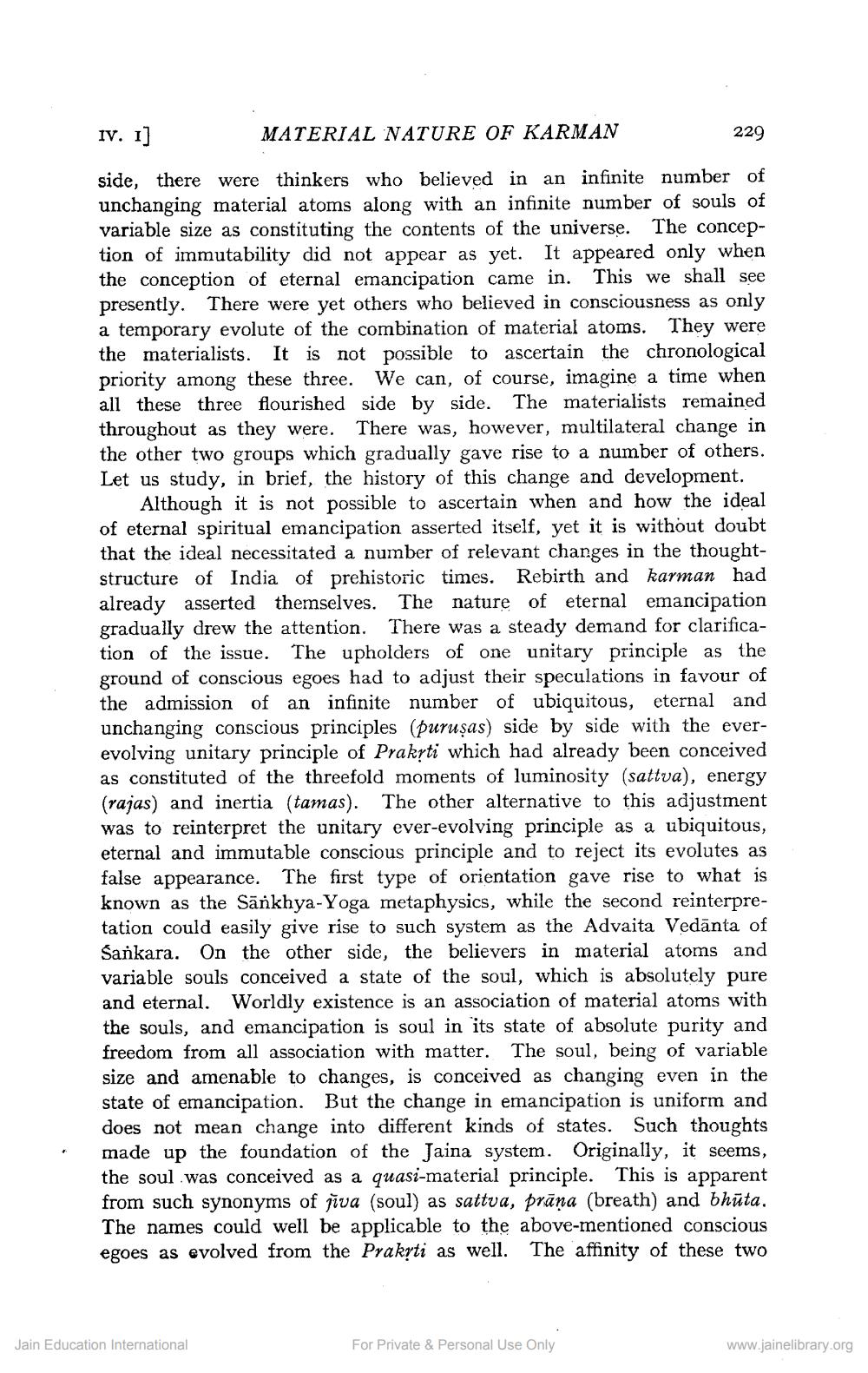________________
IV. 1]
MATERIAL NATURE OF KARMAN
229
side, there were thinkers who believed in an infinite number of unchanging material atoms along with an infinite number of souls of variable size as constituting the contents of the universe. The conception of immutability did not appear as yet. It appeared only when the conception of eternal emancipation came in. This we shall see presently. There were yet others who believed in consciousness as only a temporary evolute of the combination of material atoms. They were the materialists. It is not possible to ascertain the chronological priority among these three. We can, of course, imagine a time when all these three flourished side by side. The materialists remained throughout as they were. There was, however, multilateral change in the other two groups which gradually gave rise to a number of others. Let us study, in brief, the history of this change and development.
Although it is not possible to ascertain when and how the ideal of eternal spiritual emancipation asserted itself, yet it is without doubt that the ideal necessitated a number of relevant changes in the thoughtstructure of India of prehistoric times. Rebirth and karman had already asserted themselves. The nature of eternal emancipation gradually drew the attention. There was a steady demand for clarification of the issue. The upholders of one unitary principle as the ground of conscious egoes had to adjust their speculations in favour of the admission of an infinite number of ubiquitous, eternal and unchanging conscious principles (puruṣas) side by side with the everevolving unitary principle of Prakrti which had already been conceived as constituted of the threefold moments of luminosity (sattva), energy (rajas) and inertia (tamas). The other alternative to this adjustment was to reinterpret the unitary ever-evolving principle as a ubiquitous, eternal and immutable conscious principle and to reject its evolutes as false appearance. The first type of orientation gave rise to what is known as the Sänkhya-Yoga metaphysics, while the second reinterpretation could easily give rise to such system as the Advaita Vedānta of Sankara. On the other side, the believers in material atoms and variable souls conceived a state of the soul, which is absolutely pure and eternal. Worldly existence is an association of material atoms with the souls, and emancipation is soul in its state of absolute purity and freedom from all association with matter. The soul, being of variable size and amenable to changes, is conceived as changing even in the state of emancipation. But the change in emancipation is uniform and does not mean change into different kinds of states. Such thoughts made up the foundation of the Jaina system. Originally, it seems, the soul was conceived as a quasi-material principle. This is apparent from such synonyms of jiva (soul) as sattva, prāna (breath) and bhūta. The names could well be applicable to the above-mentioned conscious egoes as evolved from the Prakyti as well. The affinity of these two
Jain Education International
For Private & Personal Use Only
www.jainelibrary.org




